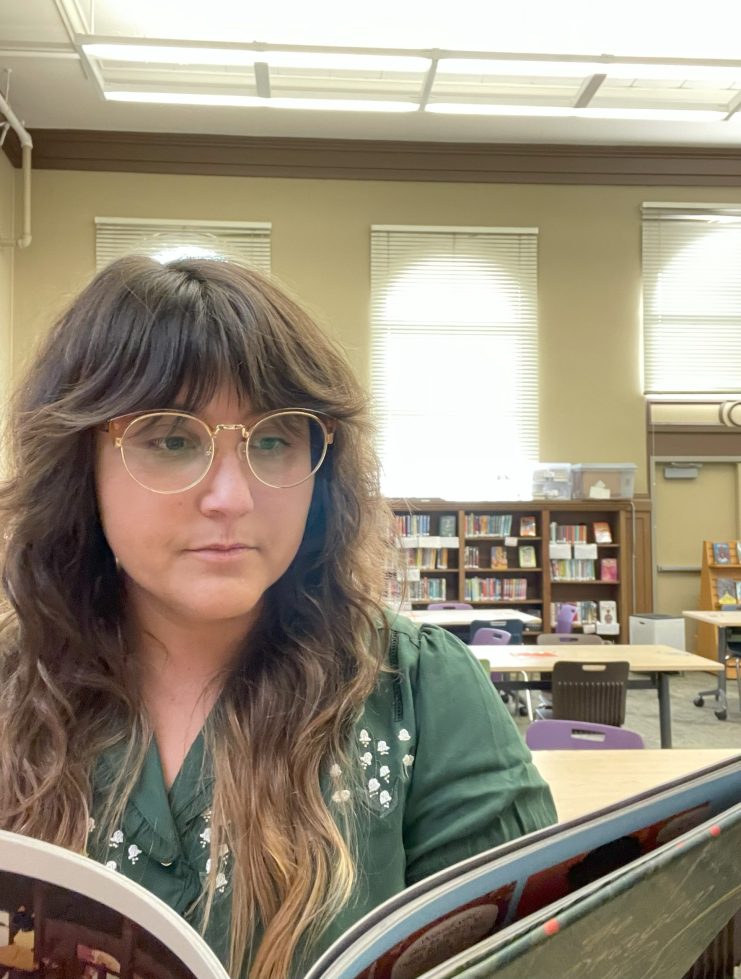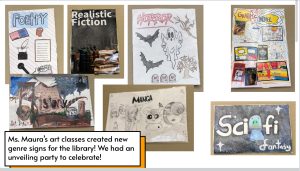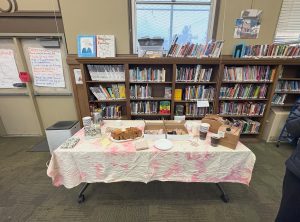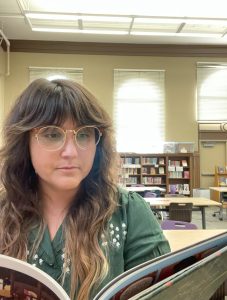
How Connecting with Teachers Transformed Our School Library
In the eight years since the schools on my campus chose to reopen our library, I have circulated thousands of books, taught research skills to hundreds of kids, hosted author visits, led National Novel Writing Months, and (once) been a venue for a student rock band performance. Because this work nearly always involves the collaboration of at least one other adult, it felt obvious to me that the other adults at my school understood the variety and scope of the work happening in the library. But was it true?
At the start of the 2024-25 school year as part of my involvement in the Lead by Learning Library Inquiry Group, I sent out a form for teachers to fill out if they wanted to schedule class visits with the library, and when 10 teachers replied, I initially felt very positive about the result. Many of the replies were from English or English Language Development teachers, whom I had collaborated with before, and it felt good to have my regulars return and want to continue to work together. Many of my recurring collaborations were of the same type – supporting independent and free choice reading. It’s something I am passionate about as a librarian, but certainly not the only thing I can do.
As the year went on, I found myself wondering: Were my colleagues seeing the library’s full potential as a partner? Was I? Were we going beyond the obvious of what a library visit could be? Were we being creative or innovative in the ways we connect students with library services?
For me, it all felt like a resounding no.
With the help of the Librarian Inquiry group facilitated by Lead by Learning, I realized I needed to turn my attention to a group of often overlooked library patrons: The teachers at my school.
As I listened to how other librarians in my cohort shared their work with staff, I began to realize that while I was busy ensuring students had access to resources and fostering a love of reading, I hadn’t been intentionally cultivating “library culture” for adults at my school. My focus had been primarily student-centric, and while that’s crucial, it became clear that inviting teachers into all of the facets of our library culture was a vital, yet often overlooked, piece of the puzzle to support students.
One big push in the direction of focusing on staff came from a mid-year feedback survey from the nine teachers I collaborated with during the first semester. While I regularly collect this data, and previously hadn’t thought much about it, this time I realized how small a fraction of our 47 staff members had collaborated with me in the library first semester.
In addition to highlighting the need to get more staff into collaboration mode, the feedback I received helped clarify many of my next steps to make that happen. For example, one collaborator said, “I loved that you reached out to prompt me to plan something with you. That was helpful!” This was corroborated by an interview with a reluctant collaborator – someone on staff who I feel I get along with well, but who had not yet worked with the library to support his content classes. These two data points lead me to reach out to other staff individually, especially to teachers I had collaborated with in past years, but who had not been in yet, and to teachers whom I had a specific idea of how to support.
I also broadened my approach. I shared the data from my mid-year survey in an unconference round at one site’s PD called “Can It Library?” The presentation was informed by the data from my mid-year staff survey and the reluctant collaborator interview. Teachers found our collaborations valuable, but wanted more guidance about how they should participate. Teachers liked it when I reached out to them, but they needed some ideas about what kinds of things might make for strong partnerships.
I also tried to invite staff to be part of the library culture with less formal asks. Over the course of the school year, I invited staff to share a topic or skill they are passionate about as part of our Learn it In the Library Series. Four teachers took me up on it, and spent one lunchtime teaching kids watercolor, origami, sticker making, and crochet. This programming represented a fun intersection of library culture for staff and students. Another low-stakes invitation for staff was inspired by another member of our Librarian inquiry group. In March 2025, I hosted a morning coffee where they were invited to drop by for a quick chat, a coffee, and to see what was new in our library. In the background, I played a slide deck that included a mix of photos from recent collaborations, feedback from the mid-year survey, and quotes from students about what they like about the library.


It’s surprisingly easy to overlook a critical group of participants in the school library: the teachers themselves. Just like other school staff, librarians, especially those of us who are “onlys” at a site, can easily find ourselves in an extra opaque silo, our valuable work becoming less visible than we imagine.
My inquiry this year brought about a profound shift: from passively waiting for teachers to come to the library, to actively seeking out opportunities to collaborate and demonstrate the library’s value across disciplines and grade levels, and in terms of school culture. The impact has been tangible. This past year, I collaborated with 21 out of 47 staff members, with 11 of those being new collaborations. What’s even more exciting is that these partnerships spanned every department except PE, truly embedding the library across the curriculum.
So, what’s next? My biggest wonder now is: how can I continue to invite staff and students into our library culture? In an end-of-year survey from May 2025, nearly 70% of students self-reported only coming to the library with a class. This data highlights the importance of increasing the number and variety of class visits so that the greatest number of students (and teachers) can experience the greatest variety of library services.
 Samantha Solomon joined the Oakland Unified School District (OUSD) as an English Teacher in 2011 and came to Life Academy as a 6th-grade Humanities teacher in 2015. In 2017, she had the pleasure of reopening the Calvin Simmons Library, which serves students in grades 6-12 at both Life Academy and United for Success Academy. After being closed for 9 years, the library now sees about 80 drop-in students a day, and partners with teachers and classes for lessons around research and media literacy. When not at school, you might find Ms. Solomon on rollerskates, camping, or (surprise) reading while cuddling her cats, Albert and Minerva.
Samantha Solomon joined the Oakland Unified School District (OUSD) as an English Teacher in 2011 and came to Life Academy as a 6th-grade Humanities teacher in 2015. In 2017, she had the pleasure of reopening the Calvin Simmons Library, which serves students in grades 6-12 at both Life Academy and United for Success Academy. After being closed for 9 years, the library now sees about 80 drop-in students a day, and partners with teachers and classes for lessons around research and media literacy. When not at school, you might find Ms. Solomon on rollerskates, camping, or (surprise) reading while cuddling her cats, Albert and Minerva.
Interested in working with Lead by Learning to support your educators, librarians, and teacher leaders? Connect with a member of our team to learn more about our partnerships.
